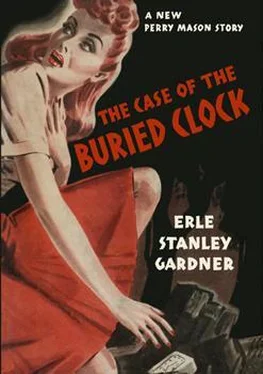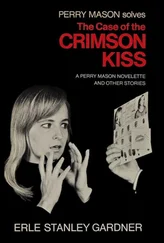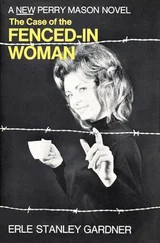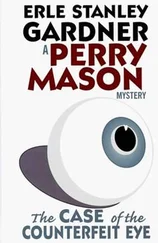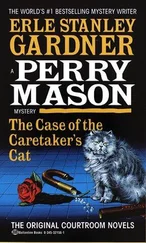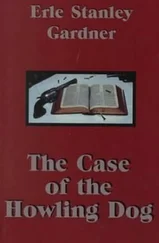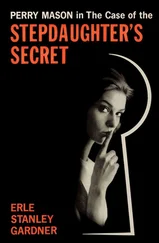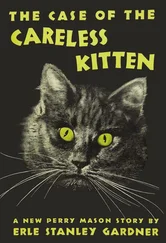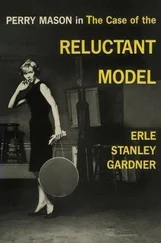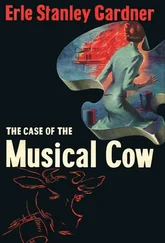“I did.”
“I now hand you a thirty-eight caliber Colt revolver, which I am asking at this time may be marked for identification. I will ask you, Doctor, if you fired any test bullets through that gun.”
“I did.”
“And did you, with the aid of a comparison microscope, compare them with the bullet which I have just handed you?”
“I did.”
“And were the bullets fired from this weapon of the same general description as the bullet which you hold in your hand, Doctor?”
“Yes, sir.”
“Now then, Doctor, by the aid of the comparison microscope, did you determine whether or not this bullet which you hold in your hand had been fired from this very weapon to which I have directed your attention?”
“I did.”
“Was that bullet so fired from this gun, Doctor?”
There was the trace of a frosty twinkle in Dr. Pringle’s eyes. “It was not!”
Judge Canfield looked down at McNair’s smiling countenance, glanced at Perry Mason, leaned forward on the bench, said, “I beg your pardon, Doctor. Did I understand the answer to be that the bullet was not fired from that weapon?”
“That is right,” Dr. Pringle said. “The bullet definitely was not fired from this weapon.”
Dr. Macon settled back in his seat with the relaxation which comes with relief from a great tension.
There was no expression whatever on the face of Milicent Hardisty.
Perry Mason kept his eyes fastened steadily on the witness.
“Now then,” McNair went on, “since it appears that the bullet was not fired from this .38 revolver which I have handed you, Doctor, I will ask if you made any further examination of that bullet or found out anything further in connection with it?”
“Yes, sir. I did.”
“I direct your attention, Doctor, to certain reddish-brown stains appearing on the bullet, and, at one particular place, to a certain bit of dried reddish material.”
“Yes, sir.”
“What is that material, Doctor?”
“It is animal tissue which has become dehydrated by exposure to the air.”
“And these reddish-brown stains, Doctor, what are these?”
“Those are blood.”
“Have you made tests with that tissue and with the blood?”
“Yes, sir.”
“And have your tests definitely ascertained whether that is or is not blood?”
“Yes, sir. They have. It is blood.”
“Now, Doctor, please listen carefully to this question. Assuming that, on the first day of October, nineteen hundred and forty-two, a man was killed by a bullet fired from a thirty-eight caliber revolver, is there anything about this bullet which would enable you, as an expert, to tell whether or not this particular bullet which you are now holding in your hand was the fatal bullet which brought about the death of this individual on October first, nineteen hundred and forty-two?”
“Yes,” Dr. Pringle said. “There is something about this bullet which would enable me to answer that question.”
“Will you please state to the jury just what that is, Doctor?”
“I tested the blood on that bullet both by the precipitin test and by microscopic measurement with a micrometer eyepiece.”
“And what did you find?”
“I found that the erythrocyte was one thirty-five hundredth of an inch in diameter.”
“What is the erythrocyte, Doctor?”
“The red blood corpuscle.”
McNair turned abruptly to Mason. “Do you have any cross-examination?”
Mason hesitated, then said, “Yes.”
He regarded Dr. Pringle with a frown. “Doctor, that is a most peculiar way to give your testimony.”
“I answered questions.”
“You did, indeed. You volunteered no conclusions.”
“No, sir. I was asked, at this time, only for facts.”
“You stated that you convinced yourself the diameter of the red blood corpuscle was one thirty-five hundredth of an inch.”
“Yes, sir.”
Mason paused for a moment, then went ahead cautiously. “Doctor, I am not absolutely certain of my information, but it seems to me that the red blood corpuscle of the human being is one thirty-two hundredth of an inch in diameter.”
“That is right.”
Mason shifted his position.
Judge Canfield leaned abruptly forward, resting his elbows on his desk, looking down at the witness. “Doctor, I want to eliminate the possibility of a misunderstanding. Do I understand from your testimony that the red blood corpuscles of the blood on this bullet were one thirty-five hundredth of an inch in diameter?”
“Yes, sir.”
“And that those of a human being are one thirty-two hundredth of an inch in diameter?”
“That is right.”
“Then do I understand, Doctor, that the blood on this bullet was not human blood?”
“That is correct, Your Honor.”
Judge Canfield looked at the district attorney with an expression of exasperation on his face, settled back in his cushioned chair and said to Mason, “Proceed with the cross-examination, Counselor.”
“Then, since the blood on this bullet was not human blood,” Mason said, “did you determine what blood it was?”
“Yes, sir. It was the blood of a dog. The erythrocyte of a dog measures one thirty-five hundredth of an inch, and, of all the domestic animals, its size is the nearest to that of the human. I satisfied myself by the precipitin test that the blood on this bullet was that of a dog.”
“Then,” Mason went on, feeling his way cautiously, “you would state, would you not, Doctor, that under no possible circumstances could this bullet have been the fatal bullet which brought about the death of Jack Hardisty?”
“Yes. This bullet has had no contact with human flesh. This bullet has been fired into a dog.”
Mason said abruptly, “That is all.”
McNair smiled and bowed at Mason. “Thank you, Counselor, for clarifying my case for me.”
Judge Canfield, plainly irritated, started to make some comment, then checked himself. After all, Perry Mason could very well take care of himself.
“That’s all for the present, Doctor,” McNair said. “I’ll call my next witness, Fred Hermann.”
Fred Hermann came forward and took the witness stand. He, too, it seemed, was on the police force at Roxbury. He was of the stolid, phlegmatic type. Appearing as a witness in this case was, to him, merely another chore which interfered with his daily routine. He acted as indifferent and bored as though he had been called to court to testify in connection with some routine misdemeanor arrest he had made the night before.
When he had given his name, age, residence and occupation, McNair asked him, “You are familiar with the witness, Renfrew, who was on the stand yesterday?”
“Yes, sir.”
“Did you accompany him to the office and residence of the defendant, Dr. Jefferson Macon, on the third day of October of the present year?”
“Yes, sir.”
“Were you with him when he discovered the spade?”
“Yes, sir.”
“I will show you that spade which was introduced in evidence, Mr. Hermann, and ask you whether you have ever seen it before.”
The witness took the spade, turned it over slowly, methodically, deliberately, in his big hands, handed it back to the prosecutor. “Yes, sir,” he said, “that’s the one.”
“And where was it that this spade was found?”
“On the north side of the garage. There was a little garden patch there and some freshly dug earth.”
“And what did you do with reference to that earth,” McNair asked, glancing triumphantly at Perry Mason.
“We started digging.”
“And how deep did you dig?”
“About three feet.”
“And what did you find?”
Hermann turned so that he was looking at the jury. “We found,” he announced, “the body of a big dog. There was a bullet hole in the body, but we couldn’t find any bullet; that had been removed.”
Читать дальше
